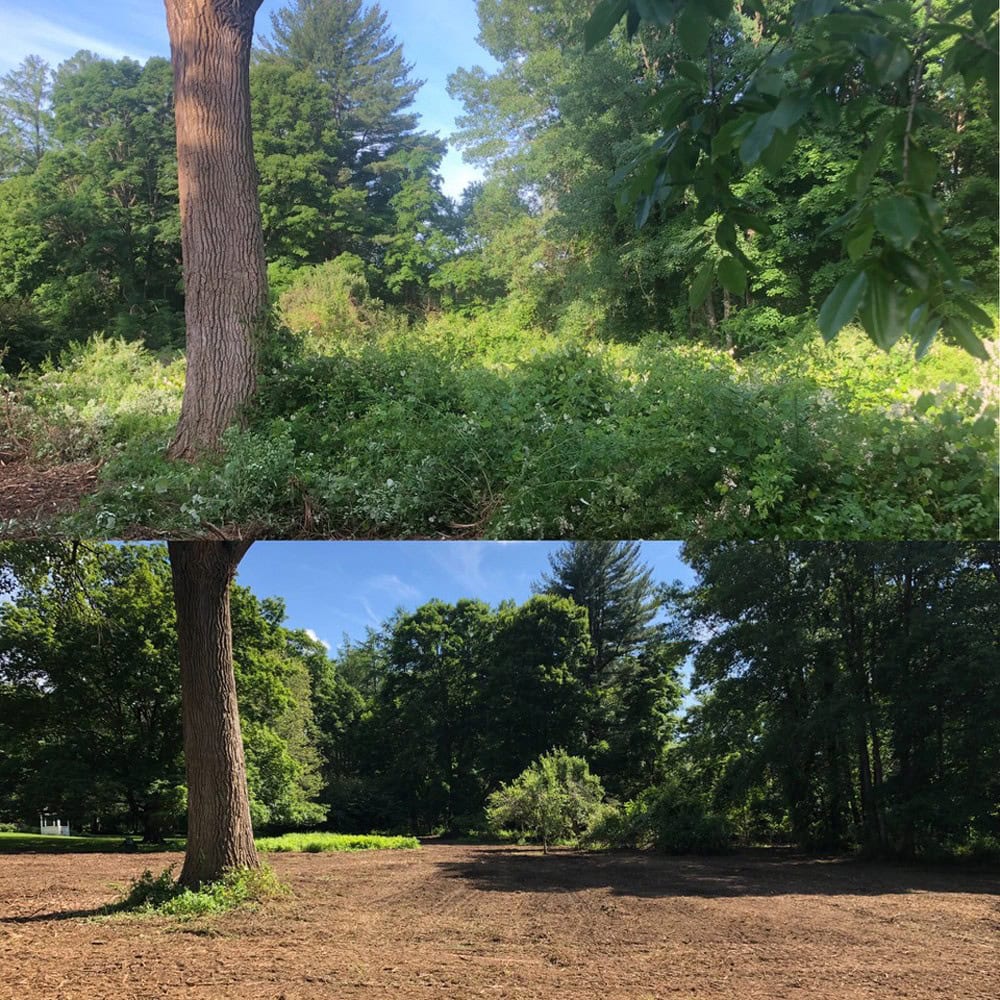The most common reason for clearing is to make room for new plants or trees. Land clearing is used to help plants grow and trees to mature. It is also used to protect the land from erosion. This can prevent soil from washing away and building up in other areas. Clearing can prepare a piece of land for farming, but it’s also the best way to make property usable for residential and commercial construction.
Winter is actually a great time to schedule tree and land clearing. When summer turns to fall and the weather starts to cool: people start to remove old or dead vegetation and prepare their property for the next season. Clearing during the winter helps prepare the ground for spring. Land clearing can be a lengthy process.
Start early in the season so you’ll have plenty of time to prepare your landscaping for warmer weather. The sooner you take care of tree removal and other big-picture aspects of the job, the more resources you’ll be able to commit to ironing out the smaller details. Filling holes and clearing excess brush will take you one step closer to a fully usable piece of land.
Performing this job in the winter months is convenient for a few reasons. As far as the operation goes, solid ground makes it much easier to clear land. As the weather starts to cool off, the ground starts to harden. Harder ground makes it easier to operate heavy equipment as opposed to soft, muddy ground. Thanks to the colder temperatures, areas that are normally muddy in other seasons can support heavy equipment.
Because there is typically less rain, winter provides the ideal weather conditions for tree and land clearing. Not only does the rain make the ground soft and slippery to navigate, but the moisture soaks the trees and brush, making them heavier and harder to move.
 Wet ground conditions and added weight make the job harder and potentially more hazardous for the crew and equipment. Precipitation and runoff tend to be lower during winter, as well, minimizing soil disturbance during the process. This makes it easier and safer to work – while minimizing the impact on the surrounding environment.
When leaves start falling in autumn, it is much easier to spot stumps, rocks and other in-ground obstacles you will need to get rid of. Because workers don’t have to deal with leaves, lots can be cleared more quickly than any other time of the year. Additionally, with no leaves on trees, it is easier to assess areas you want to preserve versus areas you want to clear.
Also many plants are dormant during the winter months. This means there will be less brush and other vegetation to contend with while doing tree and land clearing. The less there is to remove, the faster the job can be completed. Less to remove also means there will be less soil disruption. Cutting back plants after they have died off for the season allows for future growth. If you cut plants back in the spring, as they are blooming, you could inhibit their growth potential.
During the winter, most creatures are inactive, decreasing the chances of a skunk attack or bee swarm delaying your project. At best, animals and insects are a nuisance, but they can actually present a serious danger to workers in certain seasons.
Whether you have trees, bushes, stumps or other debris to clear from your land if you’re wondering when to get the job done, keep the winter months in mind. The key to preserving the integrity of your land and minimizing soil damage, at any time of year, is to work with a qualified, experienced team of experts.
Wet ground conditions and added weight make the job harder and potentially more hazardous for the crew and equipment. Precipitation and runoff tend to be lower during winter, as well, minimizing soil disturbance during the process. This makes it easier and safer to work – while minimizing the impact on the surrounding environment.
When leaves start falling in autumn, it is much easier to spot stumps, rocks and other in-ground obstacles you will need to get rid of. Because workers don’t have to deal with leaves, lots can be cleared more quickly than any other time of the year. Additionally, with no leaves on trees, it is easier to assess areas you want to preserve versus areas you want to clear.
Also many plants are dormant during the winter months. This means there will be less brush and other vegetation to contend with while doing tree and land clearing. The less there is to remove, the faster the job can be completed. Less to remove also means there will be less soil disruption. Cutting back plants after they have died off for the season allows for future growth. If you cut plants back in the spring, as they are blooming, you could inhibit their growth potential.
During the winter, most creatures are inactive, decreasing the chances of a skunk attack or bee swarm delaying your project. At best, animals and insects are a nuisance, but they can actually present a serious danger to workers in certain seasons.
Whether you have trees, bushes, stumps or other debris to clear from your land if you’re wondering when to get the job done, keep the winter months in mind. The key to preserving the integrity of your land and minimizing soil damage, at any time of year, is to work with a qualified, experienced team of experts.